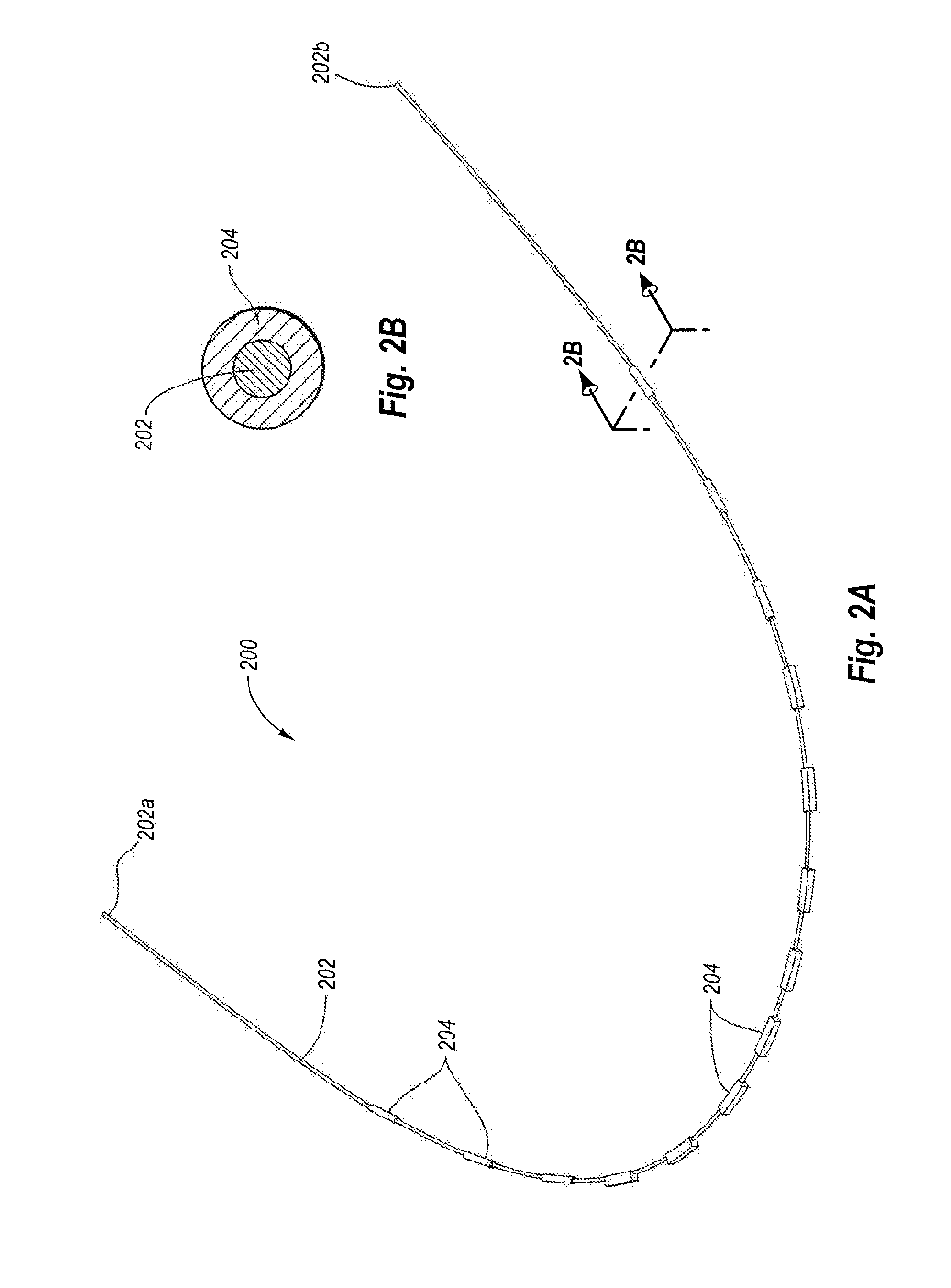Low Force Orthodontic Arch Wire Having Blocks for Improved Treatment
a low-force, treatment technology, applied in the field of arch wires, can solve the problems of increasing overall treatment time, reducing treatment time, and reducing the effectiveness of the typical arch wire to effectively transfer force to the bracket and teeth, and achieve the effect of greater cross-sectional width of the engagement block and better engagemen
- Summary
- Abstract
- Description
- Claims
- Application Information
AI Technical Summary
Benefits of technology
Problems solved by technology
Method used
Image
Examples
example 1
[0099]MBT Prescription
MBTToothtorqueangulationrotationUpperscentral 22°4°(Mandibular)lateral 10°8°cuspid 0°8°1st and 2nd bicuspids −7°0°1st molar−14°—10° 2nd molar−19°—8°partially erupted 2nd molar−14°—10° Lowersanteriors −6°0°(Maxillary)cuspids 0°3°1st bicuspid−12°2°2nd bicuspid−17°2°1st molar−20°—0°2nd molar−20°—0°partially erupted 2nd molar−10°—0°
example 2
[0100]Roth Prescription
RothToothtorqueangulationrotationUpperscentral14°5°(Mandibular)lateral 7°8°cuspid−3°10° 1st and 2nd bicuspids−7°0°1st molarTBD—TBD2nd molarTBD—TBDpartially erupted 2nd molarTBD—TBDLowersanteriors−1°0°(Maxillary)cuspids−7°6°1st bicuspid−17° 0°2nd bicuspid−22° 0°1st molarTBD—TBD2nd molarTBD—TBDpartially erupted 2nd molarTBD—TBD
example 3
[0101]Bioprogressive Prescription
Bioprogressive (Hilgers)ToothtorqueangulationrotationUpperscentral22°5°(Mandibular)lateral14°8°cuspid 7°10° 1st and 2nd bicuspids−7°0°1st molarTBD—TBD2nd molarTBD—TBDpartially erupted 2nd molarTBD—TBDLowersanteriors−1°0°(Maxillary)cuspids 7°5°1st bicuspid−11° 0°2nd bicuspid−17° 0°1st molarTBD—TBD2nd molarTBD—TBDpartially erupted 2nd molarTBD—TBD
[0102]While the foregoing prescriptions may be similar to those found in bracket sets that have angled arch wire slots, it should be understood that the direction in which the engagement blocks are rotated or angled matches the desired movement of the teeth. By contrast, the angled slots in prescription brackets are angled in a direction that is opposite to the desired movement. In this way, the inventive orthodontic arch wires provide a more intuitive and meaningful prescription as compared to prescription brackets. In addition, they can be used with generic brackets that do not require intricate positioning ...
PUM
| Property | Measurement | Unit |
|---|---|---|
| Angle | aaaaa | aaaaa |
| Angle | aaaaa | aaaaa |
| Angle | aaaaa | aaaaa |
Abstract
Description
Claims
Application Information
 Login to View More
Login to View More - R&D
- Intellectual Property
- Life Sciences
- Materials
- Tech Scout
- Unparalleled Data Quality
- Higher Quality Content
- 60% Fewer Hallucinations
Browse by: Latest US Patents, China's latest patents, Technical Efficacy Thesaurus, Application Domain, Technology Topic, Popular Technical Reports.
© 2025 PatSnap. All rights reserved.Legal|Privacy policy|Modern Slavery Act Transparency Statement|Sitemap|About US| Contact US: help@patsnap.com



